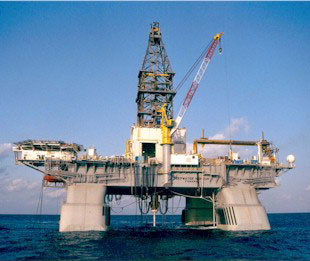Science News
Drilled in Deepwater
February 24, 2011

Saturday’s press conference at the AAAS Meeting was titled, “Deepwater Drilling: Worth the Risk?” and that’s the one that speaker Vikram Rao of the Research Triangle Energy Consortium came to. Though attending this same press conference, Samantha Joye of the University of Georgia and Terry Hazen of Lawrence Berkeley National Laboratory were more at a truth and reconciliation meeting, sitting next to each other and trying to prove that they were on the same page instead of worlds apart. Samantha Joye has been in the media stating that the oil is still in the Gulf and it will take a long time to discover it all. She has seen gas in the water column and oil on the sea floor, some she’s found with “fingerprints” from the Macondo site. She kicked off the press conference by showing us video of some of that oil on the sea floor.
Hazen, on the other hand, believes that most of the oil is gone due to degradation and dilution. He is the lead author of a paper in Science about the amazing microbes that ate much of the oil. In his team’s continuous sampling of 120 sites in the Gulf from May through October 2010, he hasn’t seen much oil-- only seven sites that have oil above EPA standards. He admits he may have missed some areas.
While they started the conference by saying they agreed about much, they seemed to disagree about everything brought up: the southeast plume that came out of the well; the oil on the surface, shore, sea floor and water column; the amount of oil that naturally seeps into the Gulf; what did or didn’t happen with the way the oil dispersed after the riser was removed on June 3rd.
Jane Lubchenco, head of NOAA, spoke after the conference and said that indeed, they were both right, “It’s not a contradiction to say that most of the oil is gone but some still lingers out there.”
(Her conference was actually an announcement of the next step of restoration in the Gulf-- you can read more about that here.)
But remember, the press conference was supposed to be on “Deepwater Drilling: Worth the Risk?” Rao did address this issue. He thinks it’s worth it if there were better support onshore for these deepwater wells-- with real time data available to experts and regulators, who would be perhaps monitoring several wells at the same time.
Lubchenco was not so certain it was worth the risk, “We must further evaluate the trade-off.”
Two smart reporters, trying to steer the original press conference back on course, asked Hazen if the oil-eating (and Gulf-saving) microbes were present near other sites of deepwater drilling. Some of the bacteria are found in the Arctic, and possibly the Atlantic, as well, Hazen said.
What do you think? Worth the risk? Oil there or gone? Share your thoughts.
(To learn more, you can check out the recent report on the monitoring of the Gulf or Samantha Joye’s blog. Science News also posted an interview with Joye over the weekend.)